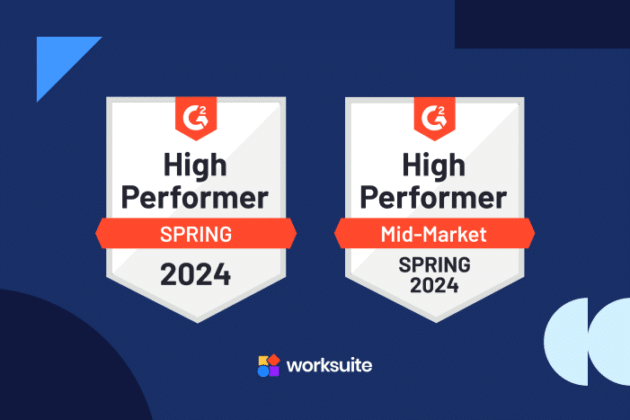
Going Rogue: Reducing "Maverick Spend" with Your Contingent Workforce


How to control your company’s freelancer spend and keep your hiring managers from going rogue.
Let’s say a marketing manager finds out that there’s one design component missing from an important project, but there’s no internal staff available to help. The marketing lead bypasses finance and compliance procedures and “goes rogue” by contacting a freelancer friend. They decide on a fee without looking at the budget or approving a brief/scope of work, then engage them for the project.
A one-time event like this can quickly become a bout of “rogue spend” or “maverick spend” – an unmanaged and often non-compliant expenditure by employees outside procurement mandates, contracts, or onboarding policies.
Rogue spending is a real problem in larger enterprise organizations growing their contingent workforce. Increasingly, hiring managers “go rogue” and bring on all kinds of contractors without thinking about budget or compliance, often wasting resources and adding financial risk to the company.
In some cases, HR and Legal departments are unaware of the freelance talent their teams are working with (and how much it costs). By one estimate from Ardent Partners consulting, nearly 60% of all contingent/contract labor is unaccounted for in the average company’s financial planning and forecasting.
With human capital being a company’s most significant expense, controlling your freelancer spending is critical. According to experts, some companies spend almost $2 billion on outsourced services.
How can organizations and agencies identify and take control of their maverick spending and compliantly scale their external workforce?
What is rogue spend?
Rogue spend: Unexpected or unpredictable costs from your team. When it comes to freelancer management, this happens when hiring managers or staffing suppliers engage talent outside of pre-negotiated contracts or their company’s contingent workforce program guidelines.
With the rise of remote work and access to more talent than ever, companies are finding new opportunities to collaborate with a freelance, contingent workforce.
But, when hiring managers don’t follow predetermined procedures to hire and onboard those freelancers and they go rogue with their spending—it can bring a lot of compliance and financial risks to the company.
Four primary compliance and financial risks:
- Worker misclassification. Depending on where you’re hiring the freelancer, it is important to classify them correctly and provide a detailed contractor agreement with scope and payment terms. In many countries, it is important to distinguish between employee and contractor to make sure benefits and pay are being dispersed correctly. Misclassification can lead to penalties, lawsuits, and in some cases, you can get banned from operating in that country.
- Work quality and overall performance. The work quality will suffer if there’s no standardized way of screening new hires, onboarding, and writing briefs for freelancers. Low quality can lead to missed deadlines, loss of customers, and spending even more as the work needs to be completed by a different freelancer or staff member.
- Scope creep. Without a system for assigning work compliantly based on the terms of the deal memo, SOW or terms of the contract, it’s easy for out-of-scope work to add up.
- Blown-out budgets and lower profits. Letting rogue spend get out of hand can easily lead to a lack of profitability. Without a centralized place to hire, manage and pay contractors efficiently, it’s common for budget creep to eat into your profits. After all, labor is typically the largest portion of operating costs.
Often the rogue spend occurs because the onboarding process is too complex and time-consuming, or there’s no clear approval path to hiring a contingent worker. Hiring managers will skip the procedure to work more quickly and negotiate their contracts. This maverick spend can quickly escalate tenfold depending on your company size.
If you don’t manage contingent workforce spending properly, it can lead to maverick spending. This means working with suppliers outside established agreements, which can cause compliance risks, budget overruns, and a lack of control over freelancer spend. These rogue practices create distractions from business priorities and KPIs.
Rogue spending can happen with:
- One-off freelance hires
- Lack of visibility into contract terms
- Off-contract assignments
- Outdated paper submission processes
It’s crucial to gain control over contingent workforce spending to avoid these negative outcomes.
How to avoid maverick spend and manage your contingent workforce
To eliminate any rogue hiring behavior in your company, getting to the bottom of the issue and avoiding a piecemeal approach is crucial. Here are a few ways to reduce maverick spending at your company and efficiently manage your contingent workforce:
A smooth onboarding process
When it takes a long time to onboard a freelancer and follow company procedures, it can lead to rogue or maverick spending. How many people from your team are involved in the onboarding process? Is it easy to bring a new contractor into the fold and ensure they are compliant?
To prevent rogue behavior, reviewing your onboarding process to check for bottlenecks and finding ways to automate workflows for compliance requirements, including contractor agreements, NDAs, and tax documents, can make all the difference.
Simplify the process to improve the experience for hiring managers and freelancers alike. And reduce friction that leads to rogue spending behavior.
Using a freelancer management platform like Worksuite can help you establish efficient and automated processes, shorten onboarding timelines, and better manage your contingent workforce.
Avoid scope creep by standardizing your client briefs
Non-standardized creative briefs often lead to scope creep and the need for urgent freelance hiring. The unclear briefing can result in last-minute additions to projects and maverick spending for unplanned resources, causing a third of marketing budgets to go to waste. To avoid this, it’s important to standardize your creative briefs and make them detailed in their purpose and goals for the project.
When hiring contractors and managing projects, ensure that the deliverable details, project scope, payment, and deadlines are specified in the contract. You can use contractor management systems like Worksuite, which has a Contracts wizard to generate bespoke contracts with fixed payment terms. This helps to avoid scope creep and rogue freelancer spending.
Syncing internally before hiring externally
When managing a contingent workforce, it’s essential to talk to the managers using them and work together to make sure everyone follows the hiring procedures. You can speed up the onboarding process by listening to what the hiring party needs and considering their suggestions.
Once you’ve created a new workflow, all the hiring managers, along with Legal, Finance, HR, and Talent Operations, should sync before continuing to hire externally and make sure everyone is on the same page with their goals. To make things even more streamlined, assign one person (with a backup) to authorize and approve payments to clarify where to go if approval is needed.
As the company tries to curb rogue spending, assign each hiring manager to deliver a quarterly budget report for their department. A quarterly report on each department’s spending with their contingent workforce will provide visibility across teams and target the exact pain points each team has.
Overall, it’s all about making sure everyone is communicating, staying budget-conscious, and working together to keep things running smoothly.
Use a centralized freelancer management system
Sometimes employees bypass standard hiring procedures because they think that the process will take too much time, and they will miss out on hiring the right talent. However, a centralized freelancer management system like Worksuite can help managers quickly hire and onboard freelance talent and set them up for payment without unnecessary delays.
Centralized freelancer management systems also benefit legal, human resources, and finance departments. They can use a workforce analytics dashboard to gain visibility into what’s happening in the company, improve time-to-hire speed, and control freelancer spend.
For instance, in Worksuite, you can view the total talent cost, cost per department, project progress, total hires, what documents are missing for each new contract hire, and reports per categories that list start dates, number of freelancers, and total budget. This level of transparency can help companies make better decisions about financial projections and department budgets every quarter.
Take rogue spending as an opportunity
Instead of viewing rogue spending as just non-compliance from stakeholders, it should also be seen as an unmet need that reveals gaps in processes and highlights areas for improvement. You can streamline your workflows by understanding the drivers of rogue spending and how technology can help these challenges.
Empowering your team with the right time-saving tools can make all the difference in your company culture – to reduce maverick spend and meet your contingent workforce KPIs.






